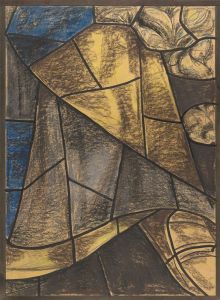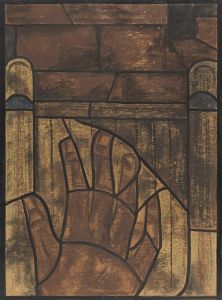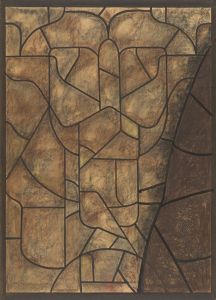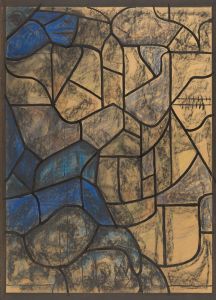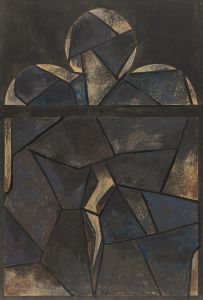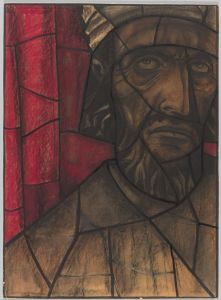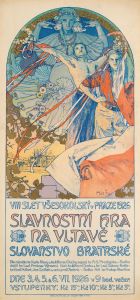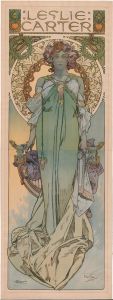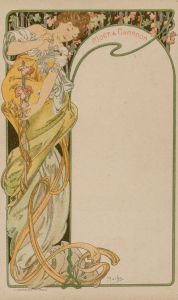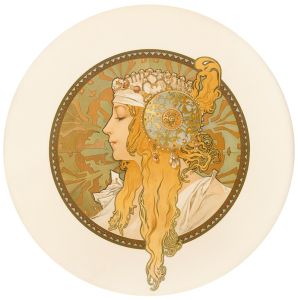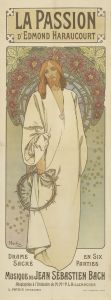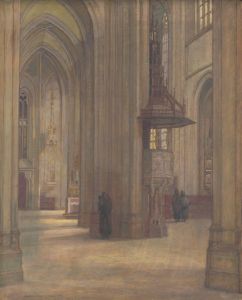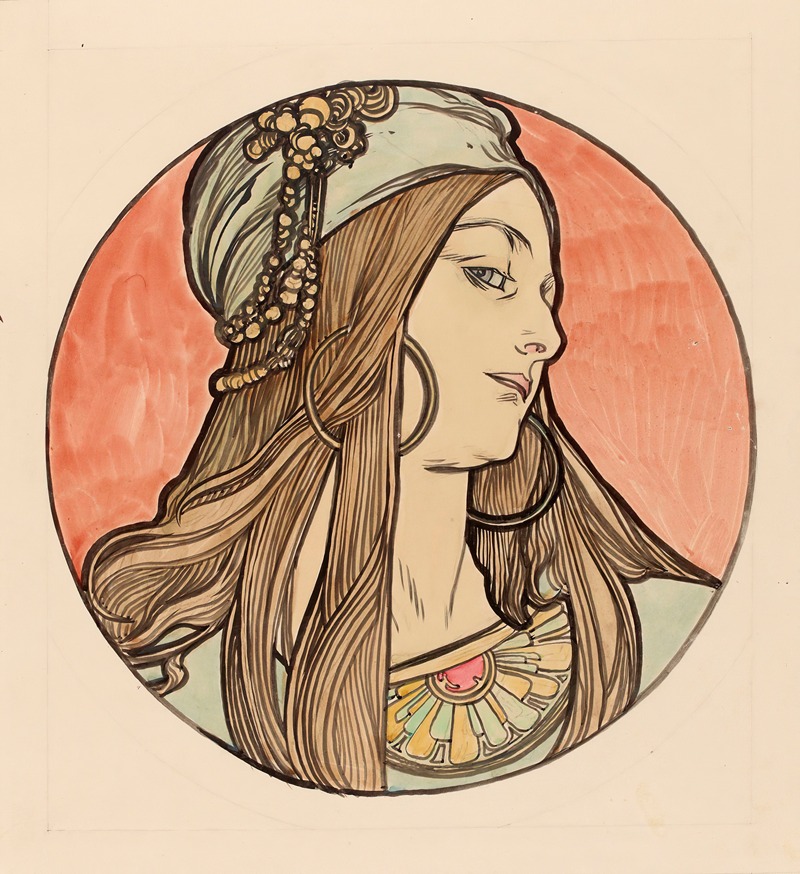
Vitrail pour la façade de la boutique Fouquet
A hand-painted replica of Alphonse Mucha’s masterpiece Vitrail pour la façade de la boutique Fouquet, meticulously crafted by professional artists to capture the true essence of the original. Each piece is created with museum-quality canvas and rare mineral pigments, carefully painted by experienced artists with delicate brushstrokes and rich, layered colors to perfectly recreate the texture of the original artwork. Unlike machine-printed reproductions, this hand-painted version brings the painting to life, infused with the artist’s emotions and skill in every stroke. Whether for personal collection or home decoration, it instantly elevates the artistic atmosphere of any space.
Alphonse Mucha, a renowned Czech artist, is celebrated for his distinctive Art Nouveau style, which is characterized by intricate designs, flowing lines, and often features beautiful women surrounded by lush, decorative elements. One of his notable works is the "Vitrail pour la façade de la boutique Fouquet," a stained glass piece designed for the facade of the Fouquet jewelry boutique in Paris.
The Fouquet boutique was owned by Georges Fouquet, a prominent jeweler in the early 20th century. In 1900, Fouquet decided to relocate his shop to the prestigious Rue Royale in Paris and sought to create a space that would reflect the opulence and modernity of his jewelry. To achieve this, he collaborated with Alphonse Mucha, who was at the height of his career and widely recognized for his posters, illustrations, and decorative art.
Mucha's design for the Fouquet boutique was comprehensive, encompassing not only the stained glass facade but also the interior design of the shop. The collaboration between Mucha and Fouquet was a perfect blend of art and commerce, as both shared a vision of creating a harmonious and luxurious environment that would captivate and attract customers.
The stained glass facade, "Vitrail pour la façade de la boutique Fouquet," was a central element of Mucha's design. It featured the artist's signature style, with elegant, flowing lines and a harmonious composition. The use of stained glass allowed Mucha to play with light and color, creating a vibrant and inviting entrance to the boutique. The design likely incorporated motifs that were consistent with Mucha's other works, such as floral patterns and allegorical figures, although specific details of the stained glass design are not extensively documented.
Mucha's work on the Fouquet boutique was part of a broader trend during the Art Nouveau period, where artists and designers sought to integrate art into everyday life, blurring the lines between fine art and functional design. The boutique itself became a work of art, with every element carefully crafted to create a cohesive aesthetic experience.
The collaboration between Mucha and Fouquet was well-received, and the boutique became a landmark in Paris, admired for its innovative design and artistic excellence. However, the original shop interior was dismantled in 1923, and much of it was later reconstructed and is now housed in the Carnavalet Museum in Paris, where it continues to be appreciated by art enthusiasts and historians.
Alphonse Mucha's contribution to the Fouquet boutique remains a testament to his skill as an artist and designer, as well as his ability to collaborate effectively with other creative professionals. The "Vitrail pour la façade de la boutique Fouquet" is a prime example of how Mucha's work transcended traditional boundaries, bringing art into commercial spaces and enriching the cultural landscape of his time.





